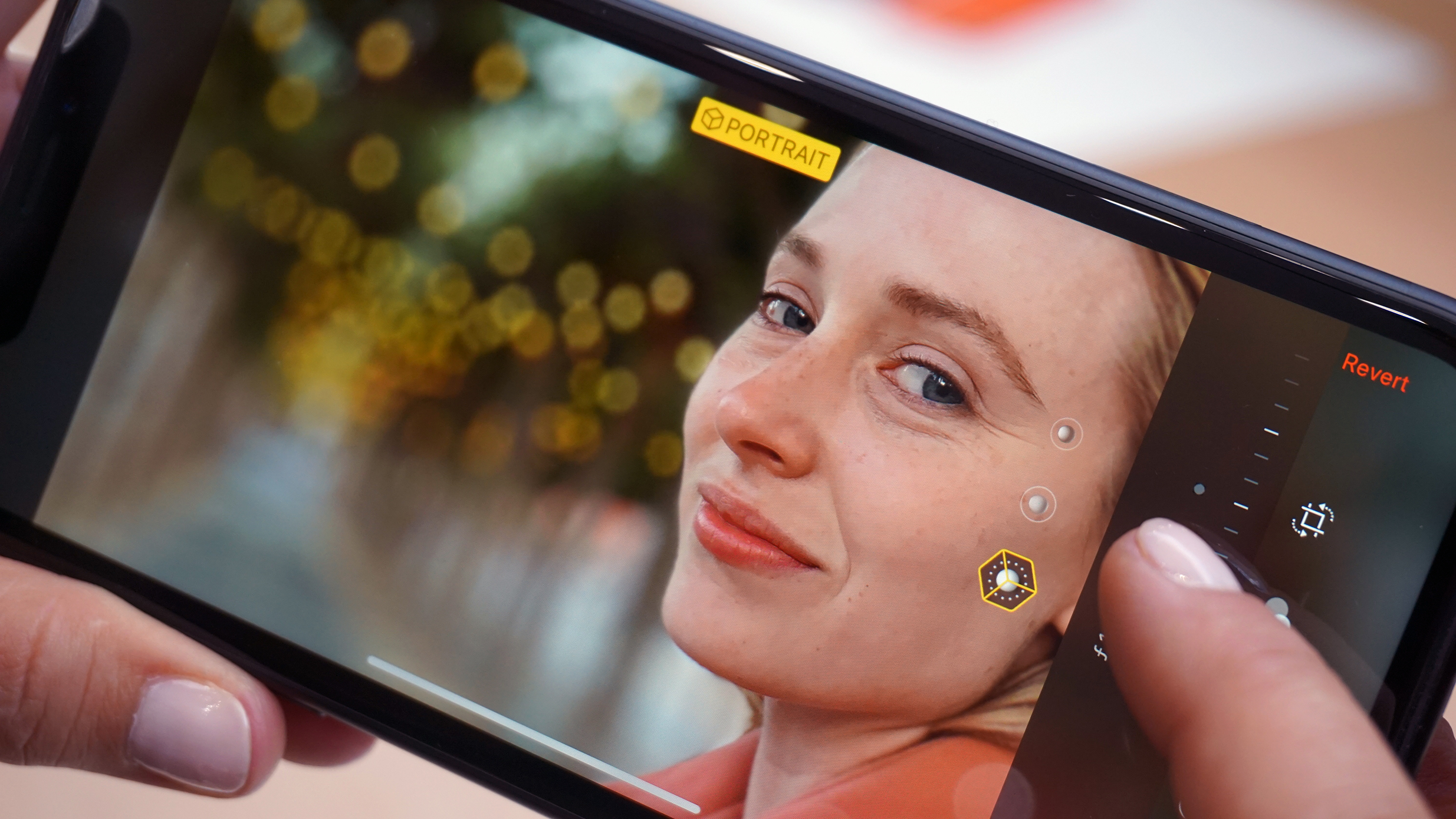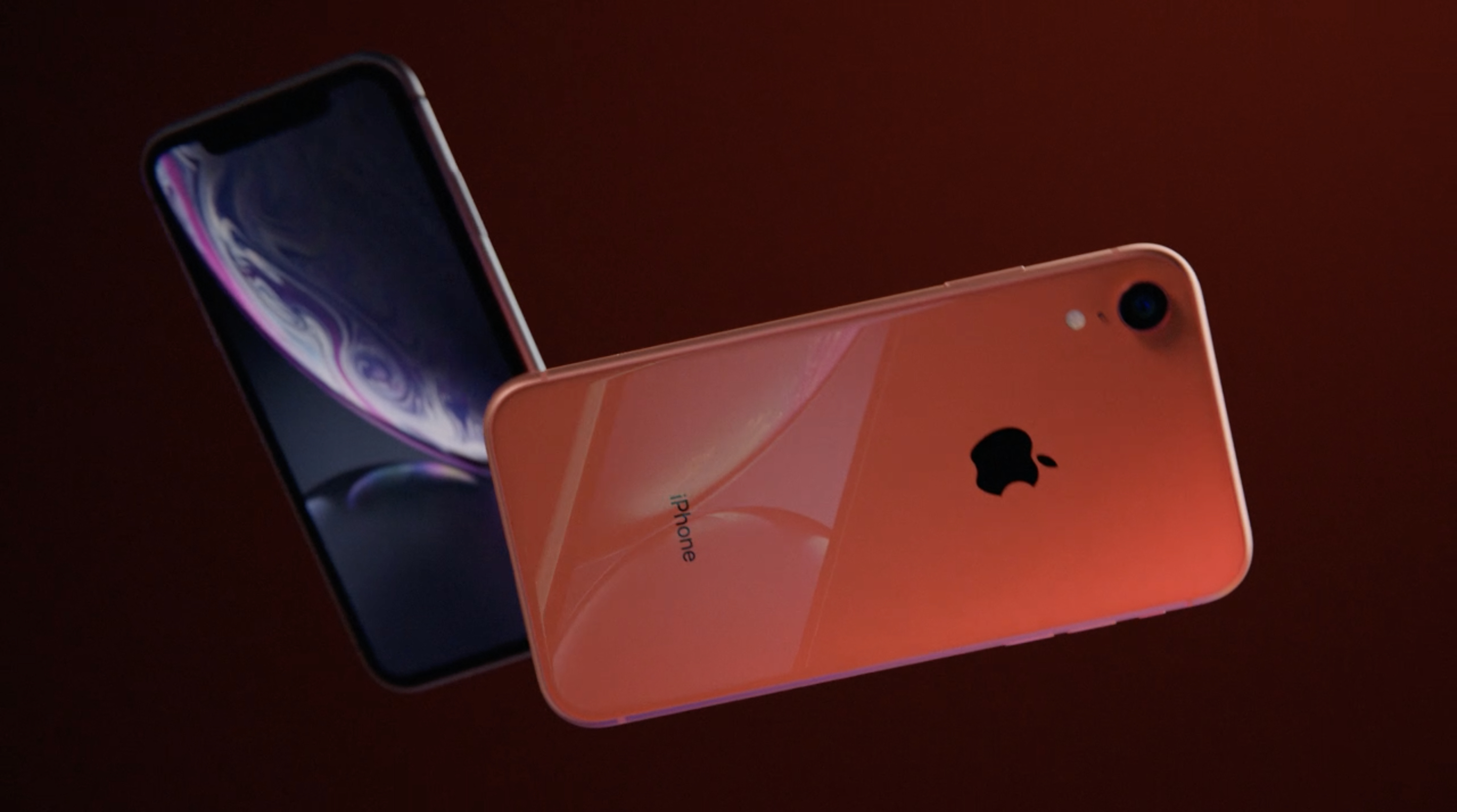Apple iPhone XR review: a great balance of polish, features and price
Updated for 2021: The iPhone XR gives you a big-screen iPhone with strong battery life for less


The iPhone XR delivers a full 2018 iPhone experience for a great price. It deserves to stand outside of the shadow of the iPhone XS, offering a finely balanced experience that takes most that phone's premium feel, and throwing in a couple of tricks of its own.
-
+
Supremely slick and powerful
-
+
Very strong camera
-
+
Great battery life
-
+
Excellent build quality
-
-
Less flexible camera system than the XS
-
-
Can get a better screen for the money
-
-
Lack of 3D Touch is weird
Why you can trust T3

Any iPhone XR review in 2021 has to first mention that there have been a number of more advanced iPhones since this was first released including the iPhone 11, the iPhone 12 and most recently the iPhone 13 - so there have been tonnes of new innovations since this phone first hit the scene.
So why would you buy it in 2021? Well, the price is lower than it's ever been and the handset still gives you plenty of up-to-date features despite not being the newest of Apple's phones.
- Read our iPhone SE (2020) review – Apple's cheapest iPhone is a great option
- iPhone XR vs iPhone SE vs iPhone 11 – compare them in one place
Apple iPhone XR review: price, models and build quality
The iPhone XR starts at £629/AU$849, with 64GB of storage space. For £679/AU$929, you can boost the storage to 128GB. There's no option for 256GB of storage, which the new iPhone SE and iPhone 11 offer.
We think the 128GB model is a real sweet spot here – 64GB is enough for anyone at a base level, but 128GB gives you that extra bit of freedom to store photos, videos and music on the phone without things getting shunted to the cloud. For the £50/AU$80 upgrade price, that’s our recommended option.
The XR comes in six colours, which we love – plain silver and black are pretty boring by this point. The red is our favourite, but we’re big fans of the yellow and coral too. But you can take your pick, of course. It’s a bit of a shame there’s no gold (though the yellow has a fairly gold-like aluminium edge), but you can’t have everything.
The iPhone XR is just about identical to the iPhone 11 (save for the different cameras on the back, and looks extremely close to the iPhone 11 Pro too, but it's actually marginally thicker than the Pro, which is just about noticeable in the hand when you hold them together, but is pretty meaningless in the grand scheme of things.
It also has a bigger bezel than that the 11 Pro. The screen still has the curved corners and notch, but with a slightly larger black border around the side.
Get all the latest news, reviews, deals and buying guides on gorgeous tech, home and active products from the T3 experts
It makes it look not quite as premium as the 11 Pro – the closer the screen comes to the edge, the more futuristic a phone feels – but it’s not a big deal.
- iPhone 11 deals: compare the options on this newer handset

Apple iPhone XR review: screen and speakers
Sporting the same screen as the iPhone 11, which is a more expensive phone, the iPhone XR has a 6.1-inch LCD Retina display with a resolution of 828x1792.
At well over 300 pixels per inch, these screens look sharp and detailed, and they include the P3 wide colour gamut for more vibrant photographs.
One of the biggest differences between the iPhone XR and the iPhone 11 Pro is the screen. The changes are pretty complex to dig into, so let's lay it out piece by piece.
First, let's talk about the 6.1-inch size. The iPhone 11 Pro is 5.8 inches, while the iPhone 11 Pro Max is 6.5 inches.
We think the iPhone XR is a great size – it's easier to use one-handed (for someone with admittedly large hands) than the Max, for example. It's closer to the size of the 5.8-inch XS than the Max, and its increase isn't really enough to say that you get a real benefit of going for a bigger screen from that third of an inch. But hey, if you watch videos on your commute, it is still bigger, and every little helps.
Interestingly, the iPhone XR and the 11 Pro Max show the same amount of content on-screen. Load up a website and you'll get identical amounts of text. It will be a tad smaller on the XR, obviously, but it means that in many cases, you're not necessarily missing out on viewing space by having this screen compared to the Max's giant display. (You can make on-screen items appear a little larger, if you like.)
This also means that you get a bonus here that you don't get on with the iPhone 11 Pro 5.8-inch version – support for split-pane apps in landscape. Certain apps will show more control options when held in landscape on the Max and the XR, but the regular 11 Pro doesn't get them.
Now, we don't actually find split-apps to be that groundbreaking when it comes to productivity, but we know some people love them, so if you're using a Plus-sized iPhone now and are ready to upgrade, but don't want to pay the Max's prices, this and the iPhone 11 hit the sweet spot for you.
And while the screen of the iPhone XR does look plenty sharp, its resolution is lower than either of the iPhone 11 Pro models (even the smaller one). The iPhone 11 Pro has a 1125x2436 display, while the 11 Pro Max has a 1242x2688 screen (Apple uses what seem to be weird resolutions because they make it easier for developers to make apps that scale across the different screen sizes that iOS supports).
The 11 Pro models are both 458ppi, which is obviously a big step up in terms of detail, and there's no denying that the difference is noticeable side-by-side. Photos and movies are clearly sharper on the XS compared to the XR.

5.8-inch iPhone on the left, 6.5-inch iPhone in the middle, iPhone XR (6.1 inches) on the right.
But if we weren't coming to it from a more expensive, higher-specced phone, it wouldn't bother us.
The XR has an LCD screen, while the 11 Pro models use OLED. Generally, OLED is considered the superior technology, because it has a giant contrast range, able to produce images that have subtle detail in dark areas.
LCD uses a backlight that shines through the screen, which means dark areas can come out more grey than black. Apple, of course, uses pretty much the best LCD screens on the planet, and it makes the difference in screen tech pretty palatable overall.
The iPhone 11 Pro models are also significantly brighter – around 800 nits as standard max brightness rather than 625 nits for the iPhone XR.
Related to this is the fact that the 11 Pro models are rated as HDR screens, while the XR isn't (though it can play HDR videos – you just don't get the full benefit). For small peak HDR highlights, the iPhone 11 Pro can even hit 1200 nits, so the difference is significant when watching HDR movies.
But while the XR's display is clearly not as nice as the displays in the Pro models, it's a million miles from feeling cheap, or bad.
Android phones that are cheaper do have it beaten in some spec areas – a higher resolution and OLED are powerful temptations – but Apple's colour accuracy and clarity of viewing from any angle are second to none, so it's not quite a clear-cut victory for the other phones.
Especially since Apple has one more ace up its sleeve: True Tone. We love this feature, which matches the colour temperature of the screen to the ambient light in the room. The idea is that a white image on the screen will look the same as a white piece of paper in the room. So, in a warm indoor light, you don't get a harsh blue light from your phone when everything else is soft yellow.
Once you try a phone with it built in, going to anything else feels barbaric.
We've talked about video a lot, so let's hear about the sound that goes alongside it. Apple has included stereo speakers here: one at each end of the phone, so when you're holding it in landscape, you get true stereo separation.
You can really hear things moving to either side of your head, giving the feeling of being right inside the sound.
It's an impressive effect, and is more than just a checkbox on a spec list when you try it, though we know a lot of people will be using their headphones anyway.
The speakers are also just generally loud and impressive – great for podcasts and even music if you just don't have a proper speaker to hand. Certainly, crappier portable speakers are unnecessary when your phone blares music out this solidly.

Apple iPhone XR review: camera
The rear camera in the iPhone XS is a wide-angle lens with a 12-megapixel sensor that's bigger than the one you'll find in the new iPhone SE (though is the same resolution – it just lets in more light per pixel by being bigger), but is the same sensor you'll find in the iPhone 11's wide-angle camera.
The difference compared to the iPhone 11 or Pro models is that it only has a single lens. The other models all feature an ultra-wide angle lens as well (which is effectively a 0.5x zoom-out), and the Pro models also have a 2x telephoto zoom lens.
Having one camera instead of two definitely reduces the flexibility for photography that you have compared to Apple's more expensive phones. The ultra-wide-angle is great for landscapes and buildings, and it also used to enable Night Mode – this takes usable shots in moments when there's way too little light otherwise, and is sadly missing from the iPhone XR (the iPhone 11 and the Pro models include it).
And in the iPhone 11 Pro models, the optical zoom adds another way of framing on top, so you can really get the look you want.
However, ignoring the zooming options and Night Mode, you still get excellent photos from this camera. The low-light performance is really strong, the Smart HDR feature means you don't have to worry about difficult exposures in scenes that mix light and dark, and the rapid focus and response means you won't miss a shot. Images pack tons of detail even in middling amount of light, and look lifelike.
The small downside compared to other iPhones is that the XR uses Apple's previous-generation image processing, while the iPhone SE, iPhone 11 and iPhone 11 Pro all use the latest-generation, so are a little better when it comes to colour reproduction and contrast.

The iPhone XR's shot is on the left here, the iPhone XS's is on the right. Subtle shifts in position aside, they're the same. This was taken under kitchen spotlights
The Portrait Mode on the iPhone XR works just like the iPhone SE and iPhone 11, in that it's all done through detection and computing from a single image (unlike the iPhone 11 Pro, which maps depth using its multiple cameras).
This has really impressive results in terms of the quality of picking out the subject and applying blur to the background – we saw crisp lines of focus, and convincing blur across the appropriate parts of person's body as well as the background.
But you need to be careful with framing of Portrait shots using this single lens, because if you go for a close-up shot, it can end up distorting things.

iPhone XR on the left, iPhone XS Max on the right.
You can also the effect above. To get the same framing for these two shots, the iPhone XR had to be held much closer to the face, which is a bit weird and intrusive in itself when taking a photo. But it also results in a slightly bulbous effect, where the nose and face are out of proportion. On the iPhone XS Max (which was released alongside the iPhone XR, and was what we used for our comparison shots), the telephoto lens gives a more proportional representation of features, by being further away.
It's a classic issue with wide-angle lenses and nearby objects. It means you may want to take Portrait shots a little further away with the iPhone XR. So let's look at one of those.

iPhone XR on the left, iPhone XS Max on the right.
We've given it a tough lighting situation: a subject in shade, but with bright sunlight behind. The framing and appearance of the subject in both is fine – the background is a bit different due to the different focal lengths (the photographer stood in different places to take these two shots with matching subject size).
The iPhone XR has done a great job making the sky look vibrant on this sunny morning, but the person is a little dark – though there's still good dynamic range in the shadows. However, there's actually more detail in the XR's image when zoomed – a result of the wide-angle lens letting in more light overall than the telephoto lens of the iPhone XR we tested it against.
We should also note that the XR's Portrait Mode only works on people, so you can't take pictures of your dog looking majestic, or your favourite cocktail against the sunset, with that background blur. That's the same for the iPhone SE. On the iPhone 11, it will also recognise pets for Portrait Mode shots. On the iPhone 11 Pro, you can take Portrait shots of anything.
The front camera picks up light well, but does tend to lose detail compared to the rear one. Portrait Mode works well on it (powered by the 3D-scanning Face ID sensor).
Let's finish up with video. It's great that the XR, like the more expensive models, has stereo microphones to record stereo sound in videos. Again, when playing them back on speakers that make the most of the split, it gives you a great sense of being in the location.
The XR also has 'extended dynamic range' video, which works like HDR to capture more information in the highlights and shadows. But it's not actually HDR, doesn't conform to HDR standards, and doesn't look different on HDR screens. The idea is to help you capture more detail when shooting the video, and it does a great job at that.
Like the Smart HDR stills mode, you can shoot video that mixes bright and dark areas without it looking rubbish. And then video in ideal conditions benefits from this too – you get beautiful detail in light conditions.
Overall, it's a very good camera system – it's largely on-par with the iPhone SE, and is a little behind the iPhone 11 and iPhone 11 Pro (especially when it comes to the extra flexibility of multiple lenses in the more expensive phones). It's not amazing here in 2020, but it's far from disappointing, either.

Apple iPhone XR review: performance and battery
The iPhone XR uses Apple's A12 processor, which might not be its latest and greatest any more, but Apple lead in this area is so large that it still beats most Android phones. Everything is instantly responsive, and blisteringly fast.
The potential for the chip in the iPhone XR is huge – whatever kind of app you want to load it with, from 4K video editing to 3D games, the iPhone XR can handle comfortably.
As we said above, this translates into iOS feeling faster than ever – opening apps, switching between them, and just generally going about your business is super-slick.
Apple has always put the smoothness of experience over things like customisability or the option to have multiple apps running in split-screen, which can lead people to feel like it's wasting some of that colossal power compared to Android phones, but ultimately the two approaches come down to a matter of personal preference.
Newer iPhones are even faster, though you'd be hard pressed to tell the difference in reality.
Battery life is impressive in the iPhone XR. It easily lasts a day, generally with a good amount of battery life over, under normal use.
The iPhone 11 and 11 Pro have it slightly beaten – and the 11 Pro Max gets a good chunk more of battery again – but not by very much. It's a really reliable performer.

The iPhone XR puts up a great fight against its bigger siblings and the Android competition.
Apple iPhone XR review: verdict
The iPhone XR sits in a slightly awkward middle ground in Apple's line-up. The iPhone SE starts at £419/$399/AU$679, which is £200/$200/AU$170 cheaper than the iPhone XR and gives you an even more modern processor, a screen and camera of equivalent quality, and the same premium fit and finish.
The iPhone SE has a much smaller screen than the XR, and uses fingerprint ID instead of face recognition, but some people may actually prefer those changes. The SE also gives you less battery life
The iPhone 11 is £100/$100/AU$150 more than the XR, and gives you a dual-lens camera with newer image processing and Night Mode, plus a little extra battery life and latest-generation Apple chip running it.
We think most people will probably look to save themselves a big chunk of money, or will step up to the latest model that gives you a more desirable camera, since that's one of the most important features for lots of us.
But the iPhone XR still serves a great purpose. If you want an iPhone that has a big screen and generous battery life, don't mind so much about its camera (which is still very good!), and want to spend mid-range prices only, then it's ideal.
If it feels like it would fit the bill for you, we do recommend it – we just think it's worth looking both up and down Apple's range to make sure the other options wouldn't make you little happier, either in price or features.
Apple iPhone XR review: News & updates
April 2020 – With the release of the iPhone SE and the iPhone XR's drop in price, we've updated this review to reflect its position in the current iPhone line-up, and its value at the lower price.
August 2020 – Read our iOS 14 hands-on review to learn about the features coming to iPhone XR in Apple's next update.
- Find out where the iPhone XR ranks in our list of the best smartphones

Matt is T3's former AV and Smart Home Editor (UK), master of all things audiovisual, overseeing our TV, speakers and headphones coverage. He also covered smart home products and large appliances, as well as our toys and games articles. He's can explain both what Dolby Vision IQ is and why the Lego you're building doesn't fit together the way the instructions say, so is truly invaluable. Matt has worked for tech publications for over 10 years, in print and online, including running T3's print magazine and launching its most recent redesign. He's also contributed to a huge number of tech and gaming titles over the years. Say hello if you see him roaming the halls at CES, IFA or Toy Fair. Matt now works for our sister title TechRadar.







